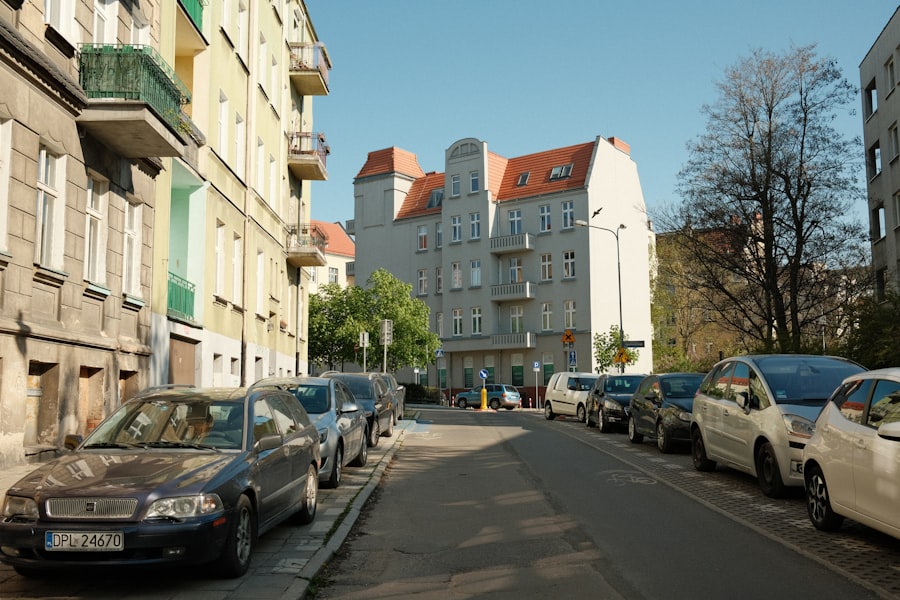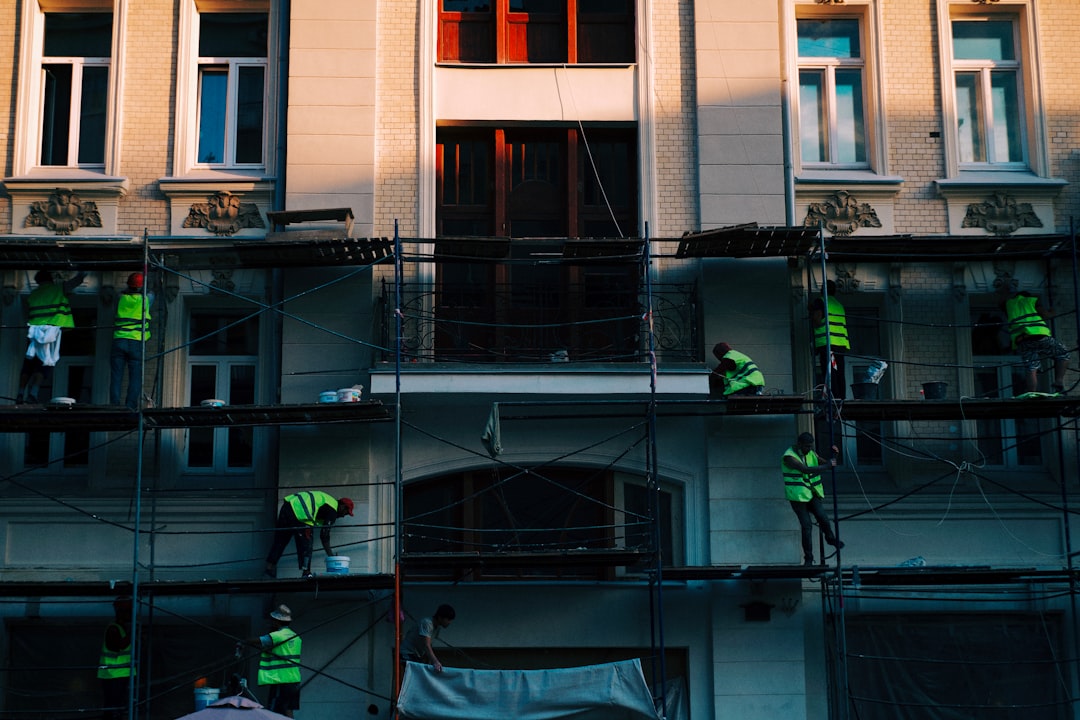Vienna, the capital of Austria, is renowned for its rich cultural heritage, stunning architecture, and high quality of life. However, beneath this picturesque facade lies a pressing housing crisis that has been escalating in recent years. As you navigate the streets of this vibrant city, you may notice the stark contrast between the opulent historical buildings and the growing number of individuals and families struggling to find affordable housing.
The demand for living spaces has surged due to various factors, including population growth, urbanization, and economic shifts, leading to a significant strain on the housing market. The situation is further complicated by rising rental prices and a limited supply of affordable units. Many residents find themselves caught in a cycle of financial stress as they grapple with the increasing cost of living.
This crisis not only affects those seeking homes but also poses challenges for the city’s social fabric, as diverse communities face displacement and segregation. Understanding the intricacies of Vienna’s housing crisis is essential for grasping the broader implications it has on society and the economy.
Key Takeaways
- Vienna is facing a housing crisis due to rapid population growth and increasing housing costs.
- Social housing programs and policies have been implemented to provide affordable housing for low-income residents.
- Affordable housing initiatives aim to make housing more accessible for middle-income earners through subsidies and rent control.
- Cooperative housing models allow residents to collectively own and manage their housing, promoting affordability and community engagement.
- Adaptive reuse of buildings for housing repurposes existing structures to create new living spaces, contributing to sustainable urban development.
Social Housing Programs and Policies
Vienna has long been recognized for its commitment to social housing, which plays a crucial role in addressing the housing crisis. The city’s social housing programs are designed to provide affordable living options for low- and middle-income residents. You may be surprised to learn that nearly 60% of Vienna’s population lives in social housing, a testament to the city’s progressive approach to urban living.
These programs are not merely about providing shelter; they aim to foster community and inclusivity, ensuring that all residents have access to safe and stable homes. The policies governing social housing in Vienna are multifaceted, focusing on long-term affordability and sustainability. The city invests heavily in the construction and maintenance of social housing units, often collaborating with non-profit organizations and private developers.
This partnership model allows for a diverse range of housing options, from modern apartments to family-friendly units.
Affordable Housing Initiatives

In addition to social housing programs, Vienna has implemented several initiatives aimed at increasing the availability of affordable housing. These initiatives are crucial in combating the rising costs associated with urban living. You might find it interesting that the city has established a framework that encourages developers to include affordable units in their projects.
This inclusionary zoning approach ensures that new developments contribute to the overall housing supply while maintaining affordability for future residents. Moreover, Vienna’s government actively supports various funding mechanisms to facilitate affordable housing construction. Grants, subsidies, and low-interest loans are made available to developers who commit to creating affordable units.
This financial support not only incentivizes developers but also helps maintain a diverse range of housing options within the city. As you delve deeper into Vienna’s housing landscape, you will discover how these initiatives are shaping the future of urban living and providing hope for those in need of affordable homes.
Cooperative Housing Models
| Cooperative Housing Models | Metrics |
|---|---|
| Number of Units | 100 |
| Occupancy Rate | 95% |
| Monthly Maintenance Fee | 300 |
| Board of Directors | Yes |
Cooperative housing models have gained traction in Vienna as an innovative solution to the housing crisis. These models empower residents by allowing them to collectively own and manage their living spaces. You may find it fascinating that cooperative housing not only promotes affordability but also fosters a sense of community among residents.
By working together, individuals can create a supportive environment where everyone contributes to the upkeep and management of their homes. In Vienna, cooperative housing projects often prioritize sustainability and social responsibility. Many cooperatives focus on environmentally friendly building practices and communal spaces that encourage interaction among residents.
As you explore these neighborhoods, you will likely notice shared gardens, playgrounds, and communal facilities that enhance the quality of life for all residents. This collaborative approach not only addresses the immediate need for affordable housing but also cultivates a strong sense of belonging within the community.
Adaptive Reuse of Buildings for Housing
Another innovative strategy employed in Vienna is the adaptive reuse of existing buildings for housing purposes. This approach involves repurposing underutilized or abandoned structures into livable spaces, effectively addressing the housing shortage while preserving the city’s architectural heritage. You may be intrigued by how this method not only provides additional housing options but also revitalizes neighborhoods that may have fallen into disrepair.
The adaptive reuse process often involves creative design solutions that transform old factories, warehouses, or historical buildings into modern residential units. As you wander through Vienna’s diverse districts, you might come across stunning examples of this practice, where contemporary living spaces coexist harmoniously with historical architecture. This strategy not only contributes to sustainable urban development but also enhances the character of the city, making it an attractive place for both residents and visitors alike.
Innovative Urban Planning Strategies

Vienna’s approach to urban planning is another critical factor in addressing its housing crisis. The city has adopted innovative strategies that prioritize sustainable development and efficient land use.
This approach not only reduces commuting times but also fosters vibrant communities where residents can live, work, and play. Furthermore, Vienna’s urban planners are increasingly focusing on creating inclusive neighborhoods that cater to diverse populations. By incorporating affordable housing options into new developments and ensuring access to essential services such as schools and healthcare facilities, the city aims to create a balanced urban environment.
As you explore Vienna’s neighborhoods, you will likely appreciate how these planning strategies contribute to a high quality of life for all residents while addressing the pressing need for affordable housing.
Sustainable and Green Building Practices
Sustainability is at the forefront of Vienna’s housing initiatives, with a strong emphasis on green building practices. You may be surprised to learn that many new residential projects incorporate environmentally friendly materials and energy-efficient technologies. This commitment to sustainability not only reduces the environmental impact of construction but also lowers utility costs for residents, making housing more affordable in the long run.
Vienna’s focus on green building extends beyond individual projects; it encompasses entire neighborhoods designed with sustainability in mind. You might encounter developments featuring green roofs, solar panels, and efficient waste management systems that promote eco-friendly living. By prioritizing sustainable practices in housing construction, Vienna is setting an example for other cities grappling with similar challenges while ensuring that future generations can enjoy a healthy urban environment.
Mixed-Use Development Projects
Mixed-use development projects have emerged as a vital component of Vienna’s strategy to combat its housing crisis. These projects combine residential units with commercial spaces, creating vibrant neighborhoods where residents can access essential services without having to travel far from home. You may find it appealing that this approach not only addresses housing needs but also stimulates local economies by attracting businesses and fostering community engagement.
As you explore mixed-use developments throughout Vienna, you will likely notice how they enhance the overall quality of life for residents. With shops, cafes, parks, and recreational facilities integrated into these neighborhoods, individuals can enjoy a sense of community while having their daily needs met within walking distance. This holistic approach to urban living not only alleviates pressure on the housing market but also promotes social interaction and connectivity among residents.
Supportive Housing for Vulnerable Populations
Vienna recognizes that certain populations face unique challenges when it comes to securing stable housing. Supportive housing initiatives have been developed to assist vulnerable groups such as the homeless, individuals with disabilities, and low-income families. You may be heartened to learn that these programs provide not just shelter but also essential support services aimed at helping residents achieve long-term stability.
Supportive housing projects often include on-site services such as counseling, job training, and healthcare access. By addressing the underlying issues that contribute to homelessness or instability, these initiatives empower individuals to rebuild their lives within a supportive community environment. As you witness these efforts throughout Vienna, you will gain insight into how comprehensive support systems can make a significant difference in the lives of those facing adversity.
Public-Private Partnerships in Housing
Public-private partnerships (PPPs) have become instrumental in addressing Vienna’s housing crisis by leveraging resources from both sectors to create affordable living options. You may find it interesting that these collaborations allow for innovative solutions that benefit both developers and the community at large. By combining public funding with private expertise, Vienna can expedite the construction of new housing units while ensuring they remain accessible to those in need.
These partnerships often involve shared risk and reward structures that incentivize private developers to invest in affordable housing projects. As you explore various developments throughout the city, you might notice how these collaborations have led to successful outcomes that align with Vienna’s broader goals of sustainability and inclusivity. The continued success of PPPs will be crucial in navigating future challenges within the housing market.
Future Challenges and Opportunities in Vienna’s Housing Crisis
As you reflect on Vienna’s ongoing housing crisis, it becomes clear that while significant progress has been made through various initiatives and strategies, challenges remain on the horizon. The city’s population continues to grow, driven by both domestic migration and international immigration, which places additional pressure on an already strained housing market. You may wonder how Vienna will balance this demand with its commitment to affordability and sustainability.
However, amidst these challenges lie opportunities for innovation and collaboration. The city’s proactive approach to urban planning and community engagement can serve as a model for other cities facing similar issues worldwide. By continuing to invest in affordable housing initiatives, adaptive reuse projects, and sustainable practices, Vienna can pave the way for a more equitable future where all residents have access to safe and affordable homes.
In conclusion, as you navigate through Vienna’s complex housing landscape, it becomes evident that addressing the crisis requires a multifaceted approach involving social policies, innovative strategies, and community engagement. The city’s commitment to inclusivity and sustainability offers hope for those affected by rising costs while setting an example for urban centers around the globe grappling with similar challenges.
Vienna has garnered attention for its innovative approach to solving the housing crisis, focusing on affordable housing and community-oriented development. A related article that delves into the strategies employed by the city can be found at this link. The city’s commitment to public housing and sustainable urban planning serves as a model for other cities grappling with similar challenges.
WATCH THIS! The Housing Secret America Will NEVER Use (It Would Crash Your Retirement)
FAQs
What was the housing crisis in Vienna?
The housing crisis in Vienna was characterized by a shortage of affordable housing, rising rental prices, and an increasing number of people struggling to find suitable accommodation.
How did Vienna solve the housing crisis?
Vienna implemented a range of measures to address the housing crisis, including the construction of new social housing units, strict rent control regulations, and the promotion of cooperative housing initiatives.
What is social housing?
Social housing refers to housing that is provided at below-market rates to individuals or families with low incomes. In Vienna, social housing is a key component of the city’s housing policy and has played a significant role in addressing the housing crisis.
What are cooperative housing initiatives?
Cooperative housing initiatives involve groups of individuals coming together to collectively develop and manage their own housing projects. In Vienna, these initiatives have helped to create affordable and community-oriented housing options.
What role did rent control regulations play in solving the housing crisis in Vienna?
Vienna’s strict rent control regulations have helped to stabilize rental prices and prevent excessive increases. This has made housing more affordable for residents and has contributed to the city’s overall housing stability.
What can other cities learn from Vienna’s approach to solving the housing crisis?
Other cities can learn from Vienna’s comprehensive and proactive approach to addressing the housing crisis, which includes a focus on social housing, cooperative initiatives, and effective rent control regulations. These strategies have helped to create a more equitable and sustainable housing market in Vienna.
